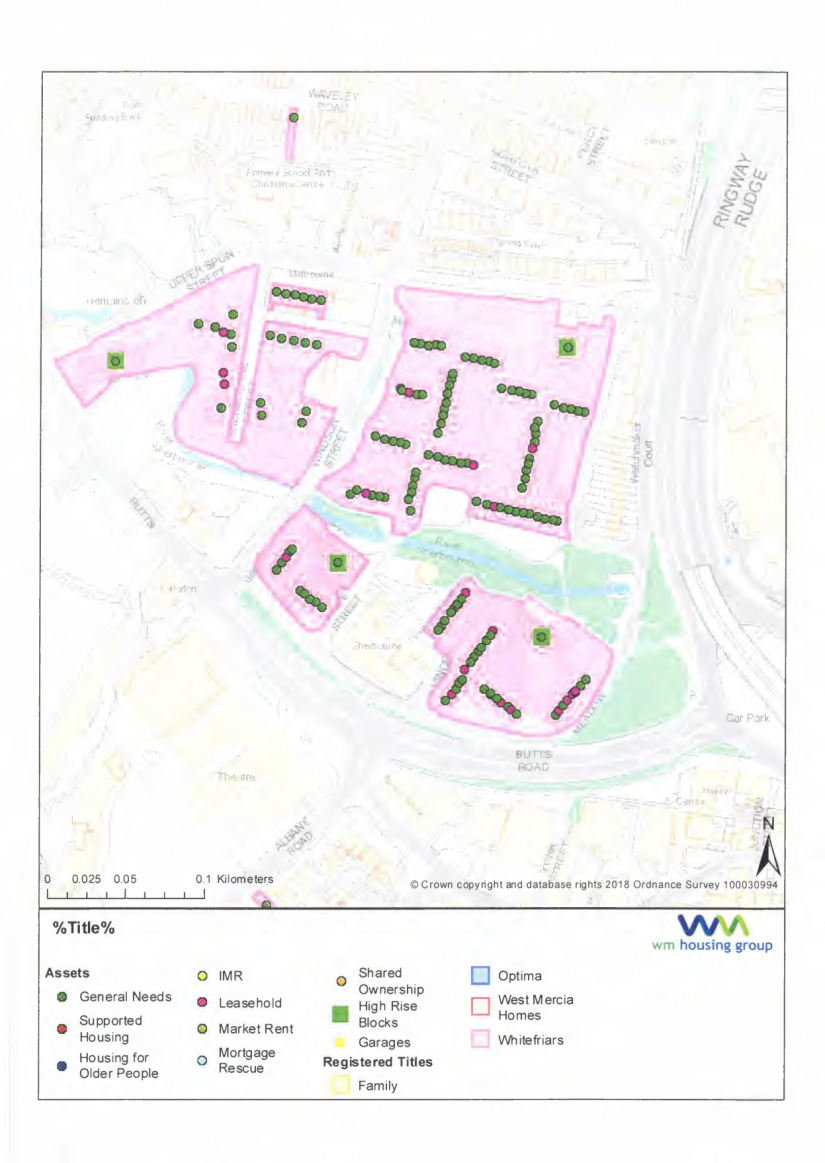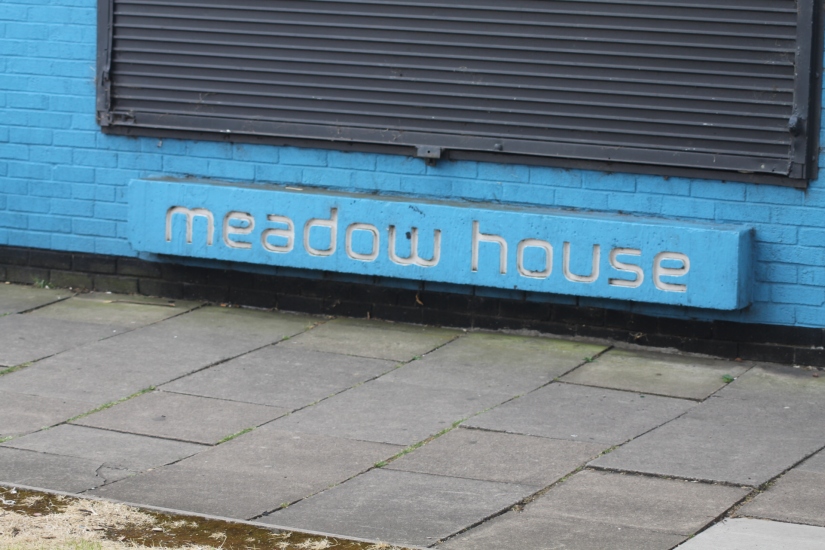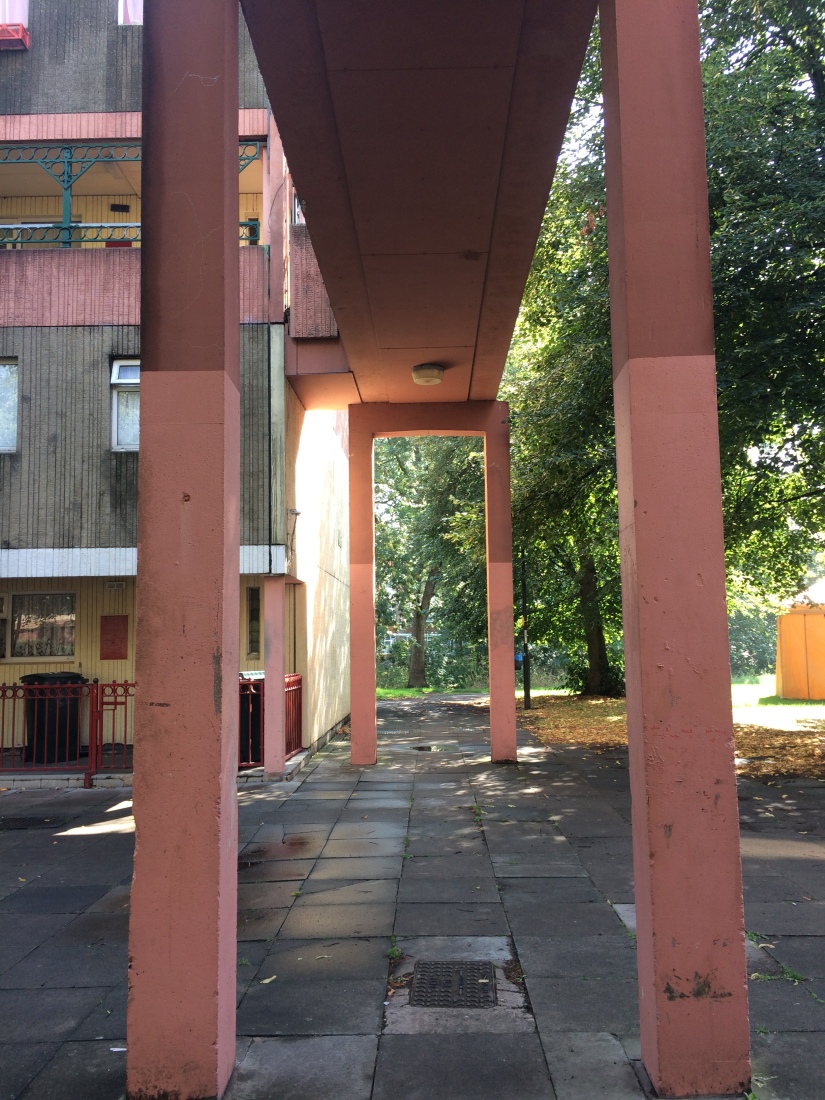Mandy’s name has come up multiple times throughout many of our interviews and meetings. She serves as Spon End’s neighbourhood officer from Whitefriars Housing. Among many of her responsibilities is the hosting of regular housing and community surgeries in the Oasis Café (see our post on Lindsey here). She has been especially helpful and proactive in supporting residents – whether against racial abuse (see Muna’s story here), or in community-organising against cuckooing (see Kylie’s story here). With so much emphasis on the key role she has been playing in the Spon End community, we wanted to meet with her and learn more about her engagement and involvement in the neighbourhood. We are very grateful that both Mandy and Ian, a neighbourhood manager at Whitefriars, took the time to talk to us.
Carol and I met Mandy and Ian in front of the Oasis Café, and walked our way through to Wellington Gardens where we found a quiet bench. On a sunny and warm day, situated in one the many hidden nooks of peace and calm in the city, this was the perfect spot to have a conversation.
Mandy told us about how she became the Spon End neighbourhood officer, after having been transferred from Tile Hill. At the time, Whitefriars had moved to its current location at Little Park Street. Mandy lived close-by, within walking distance, so it made sense for her to become Spon End’s neighbourhood officer. Her predecessor had worked in Spon End for around ten years, which Mandy explained is ‘a long time’ – it is important to maintain continuity for neighbourhood officers.
As with most of our interviewees, we asked Mandy where she thinks Spon End begins and ends. We received a very precise sense of the region’s boundaries, one which was based on the Whitefriars properties. Mandy explained:
For us, Spon End is circular. It starts from the end of the subway and it goes in a circular direction. So, it will be along Meadow House to the main road, and it will finish at Spon Gate house, and then continue round in front of the school and past the shops… So, where we are sitting now [Wellington Gardens] are Whitefriars properties as well.
Ian, generously, also provided us with an informative map that describes the geography. It also maps the different types of ownership:

Mandy and Ian explained that this does not mean that Whitefriars owns all the land, of course. Actually, land ownership is split. Within Spon End a lot of the roads, pathways and some green areas belong to Coventry City Council.
At several points of the interview, we further probed the significance of Spon End with regards to Whitefriars’ relationship with Coventry at large. Ian explained how Spon End is being looked at “quite intensely”. By that he meant that because the area is densely populated, each development programme has significant impact and also requires a high level of funding.
There has never been the level of funding available to get everything done…[yet]… Spon End is high on the radar in terms of needing a high level of investment, and I think this is moving forwards.
Ian told us a lot about recent revamping projects, particularly in Meadow House, which was one of the first projects Whitefriars engaged with. They provided a general tidying up and supplied the building with new flooring and fire doors. Mandy and Ian thought that, since the improvements, residents had kept on top of it and taken pride in it.
I think it is important to see the change physically happen… It has been four years, but what you see is only general wear and tear… Meadow was also our first one, so there were lessons [to be] learned for other projects.

Besides these projects, we also asked about some of the key problems that have been identified in the area. Mandy highlighted an issue that we had only come across during the earliest community meetings that Marijn and I attended with Sustrans, namely the issue of parking.
Mandy explained that:
Parking is a real major issue and it is so bad for the residents, because they can’t park. Spon End is right next to the city centre and it is free for everyone. But think of when these properties were built, it is right next to the city centre and nobody drove. So, it was ideal at that time. Now, [however], you have two people with a car… I [receive] a lot of inquiries having to do with parking areas. Unfortunately, the permits have been hard to enforce.
Mandy also told us the story of how one of the main challenges facing Spon End was addressed collectively, through residents’ action and coming-together. The issue, cuckooing, occurs, as we wrote earlier, when drug dealers hijack someone’s home and use it as a base to deal illegal drugs.
Mandy explained that because “everyone knows everyone” there has been a “historic lack of reporting.” This was the reason why she set up the surgery at the Oasis Café as well as projects such as “Spot it, See it!”. She made it a point to always walk around the neighbourhood, to be present and meet residents rather than simply staying in the office. Mandy also keeps residents informed through a regular newsletter that addresses problems, developments and relevant projects. All of this, she explained to us, helps in tackling the problem of cuckooing.
This is how it started, through Birmingham gangs and their connections here. You walk around and get a feel of it yourself, that something was not right, because you are in and out, you would sense that something was going on, but nobody was doing anything about it.
That one incident escalated into three flats.
Carol asked if it occurred in high-rise buildings, yet contrary to the impression we initially had – that the problem might be specific to more vertical buildings -, Mandy informed us that the first incident took place in a low-rise flat.
It was not the high-rises, but the flats in front of the schools… It was so active that you would see people queuing up… [in this area, it was difficult] because it is heavily populated, so it was very difficult to manage. In the end, finally, we got the places back and they went straight somewhere else [she points to Meadow House].
[Ian explains:] In Meadow, it was easier to spot because the tracking of who gets in and out is easier… You see it through the door buzzing system.
[Mandy continues:] We managed to shut that down… and within two weeks they were in George Pool, but that one was a bit different, the residents weren’t standing for it. They were absolutely brilliant, and this is what I tried to convey in the newsletter.
Mandy and Ian emphasised the need to work closely with the residents and the police to tackle this problem. They both told us how cuckooing affects particularly vulnerable people. As neighbourhood officers, it was important to be actively engaging with vulnerable residents by visiting their properties and speaking to them. As Ian explained, this helps disrupt cuckooing and makes it more difficult for dealers to continue their operations. It also highlights that a strong sense of neighbourly community is important as an alarm when the most vulnerable are taken advantage of.
We chatted further about the different communities that live in Spon End. We had noticed on our walks a strong sense of community in parts of the estate, especially where children play together in the enclosed courtyard (see also Carol’s previous post Badria & Chaltu). Mandy reflected further on that observation:
… there are different communities [living there]. So, in Milestone [House], for example, the residents all grew up on the Spon End estate and there aren’t many kids, but then you go to Trafalgar [House] and there are a lot of kids all around.
Yet, not to romanticise life on the estate, Mandy reminded us:
It is tired! It [the estate] has lacked having money spent on it, yet the residents keep it really tidy, because everyone looks after their area.


2 thoughts on “Mandy and Ian”